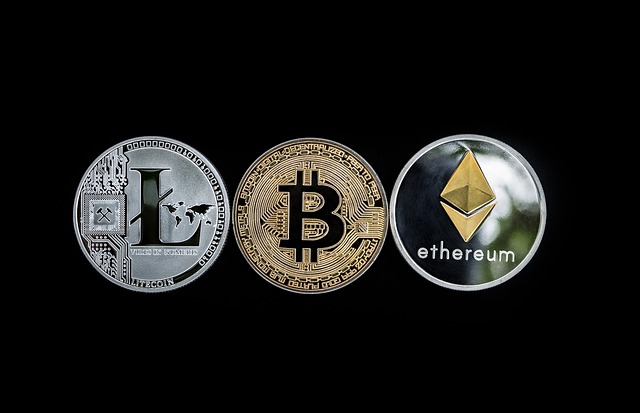Tokenized Real-World Assets: Transforming Crypto Markets with Digital Ownership
Introduction
The rise of blockchain technology has introduced a paradigm shift in how we
perceive ownership, assets, and transactions. Traditionally, assets like real
estate, stocks, or commodities are bound by physical and legal frameworks,
which often make them illiquid and difficult to transfer. However, the advent
of tokenization — the process of converting real-world assets
into digital tokens on a blockchain — has begun to reshape this landscape. By
enabling digital ownership, tokenized real-world assets are bringing
greater liquidity, accessibility, and efficiency to traditionally illiquid
markets. This transformation is not only expanding the potential of
cryptocurrencies but also making traditional asset markets more efficient and
inclusive.
In this article, we explore how tokenized real-world assets are
revolutionizing the crypto markets, enhancing market liquidity, providing
easier access to ownership, and redefining the way we engage with assets across
various sectors such as real estate, stocks, and commodities.
The Concept of Tokenized Real-World Assets
Tokenization refers to the creation of a digital token on a
blockchain that represents a real-world asset, such as real estate, fine art,
or even shares of a company. Each token acts as a digital representation of the
asset, and ownership of the token implies ownership of the underlying asset.
These tokens are secured and authenticated by the blockchain, ensuring that
they are immutable, transparent, and tamper-proof. As a result, tokenized
assets are not only easier to transfer but also more easily divisible, offering
increased flexibility compared to traditional assets.
For example, real estate is typically a high-value, illiquid asset that
requires significant capital and time to buy, sell, or trade. With
tokenization, real estate properties can be divided into smaller tokens,
enabling fractional ownership. This opens up opportunities for investors to own
a fraction of a property with a much lower capital requirement. Additionally,
tokenization can reduce the time and cost associated with property
transactions, making them faster and more efficient.
Similarly, tokenizing commodities like gold or oil can enable smaller
investors to participate in markets they might otherwise be excluded from due
to high entry costs. Tokenization of assets allows for seamless transactions,
eliminating the need for intermediaries like brokers or clearinghouses, which
typically add to transaction costs and time delays.
Benefits of Tokenizing Real-World Assets
The tokenization of real-world assets brings a number of significant
benefits that have the potential to disrupt existing financial and asset
markets. One of the primary advantages is increased liquidity.
Traditional markets for assets like real estate or fine art are often illiquid,
meaning that it can be difficult to sell an asset quickly without significant
price concessions. Tokenization addresses this problem by enabling fractional
ownership, where assets can be divided into smaller, tradable units. This
allows for the buying and selling of assets in smaller increments, making it
easier for investors to trade and liquidate holdings.
Another key benefit of tokenization is greater accessibility.
Traditionally, high-value assets like real estate or rare collectibles have been
the domain of wealthy individuals or institutional investors. By creating
fractionalized tokens that represent a portion of an asset, tokenization
democratizes access to investment opportunities. Now, anyone with internet
access and a small amount of capital can invest in assets that were once out of
their reach. This is particularly important in emerging markets, where access
to investment opportunities has historically been limited.
Additionally, the transparency and security
provided by blockchain technology ensure that tokenized assets are verifiable
and tamper-proof. Blockchain’s decentralized nature eliminates the need for
trusted intermediaries and centralized authorities, reducing the risks
associated with fraud and counterfeiting. The use of smart contracts further
enhances security by automating the transfer of ownership and ensuring that
transactions are executed according to predefined conditions.
Real-World Use Cases of Tokenized Assets
Tokenization has already begun to make waves in various industries,
demonstrating the transformative potential of digital ownership. One of the
most prominent examples is in the real estate market.
Traditionally, purchasing property required a significant financial commitment
and was often inaccessible to many investors. With tokenization, real estate
properties can be divided into smaller, tradable units, enabling fractional
ownership. Investors can now buy a fraction of a building or a piece of land,
providing them with a stake in the real estate market without the burden of
full ownership.
The art market has also seen the potential of tokenization.
Fine art, often viewed as an illiquid and exclusive asset, can now be
tokenized, allowing investors to buy and sell fractional ownership of expensive
artworks. This not only makes art investment accessible to a broader audience
but also provides liquidity to a market that has traditionally been difficult
to navigate.
In the financial markets, tokenization is transforming how
assets such as equity shares and bonds are traded.
Tokenized securities enable investors to buy fractional shares of companies,
leading to more efficient and liquid markets. Additionally, tokenized bonds can
provide higher liquidity and faster settlement times compared to traditional
bond markets, reducing the costs and risks involved in trading these financial
instruments.
Challenges and Risks in Tokenizing Real-World Assets
While the benefits of tokenization are evident, there are several challenges
and risks that need to be addressed for the widespread adoption of tokenized
real-world assets. One of the primary challenges is regulation.
The legal framework surrounding tokenized assets is still evolving, and
governments and regulatory bodies around the world are working to establish
guidelines to ensure that tokenized assets comply with existing laws. Issues
such as securities regulation, anti-money laundering (AML) requirements, and
investor protection must be carefully considered when creating and trading
tokenized assets.
Another challenge is market adoption. While tokenization
offers numerous benefits, many industries are still hesitant to fully embrace
blockchain technology. In sectors like real estate, traditional methods of
buying and selling properties are deeply ingrained in business practices, and
it may take time to overcome resistance to change. Educating stakeholders about
the advantages of tokenization and how it can streamline operations is crucial
for achieving broad adoption.
Security risks also pose a concern. While blockchain itself
is inherently secure, vulnerabilities may exist in the platforms that
facilitate the tokenization process. For example, smart contracts that govern
the transfer of tokenized assets may be susceptible to coding errors or
hacking, potentially leading to loss of assets. Ensuring robust security
protocols and continuous auditing of smart contracts is essential to mitigating
these risks.
The Future of Tokenized Real-World Assets
As technology continues to evolve and blockchain adoption grows, the future
of tokenized real-world assets looks promising. Over the next few years,
tokenization could become a mainstream way to invest in a variety of assets,
including real estate, art, stocks, and even intellectual property. The ability
to divide assets into smaller, easily tradable units will bring greater
liquidity to previously illiquid markets and allow individuals and institutions
to diversify their portfolios in ways that were previously not possible.
Additionally, the integration of decentralized finance (DeFi)
platforms with tokenized assets will create new opportunities for earning
returns on investments. Tokenized assets can be used as collateral for
borrowing or lending, opening up new avenues for financial products and
services that were previously unavailable in traditional finance.
Regulatory clarity will be crucial for the widespread adoption of tokenized
assets. As governments and regulators develop frameworks for these digital
assets, businesses and investors will gain more confidence in the security and
legality of tokenized transactions. Once these regulatory hurdles are cleared,
the full potential of tokenized real-world assets will likely be realized,
leading to a more efficient, inclusive, and accessible global financial system.
Conclusion
Tokenized real-world assets are poised to transform the cryptocurrency
market by enabling digital ownership and fractionalizing traditionally illiquid
assets. Through blockchain technology, tokenization brings greater liquidity,
accessibility, and transparency to markets
such as real estate, fine art, and financial securities. As more industries
adopt tokenization, it will democratize access to investment opportunities and
streamline market operations. However, challenges related to regulation, market
adoption, and security need to be addressed for tokenized assets to reach their
full potential. With continued innovation and regulatory clarity, tokenized
real-world assets could play a central role in the future of the global
financial system.



Comments
Post a Comment